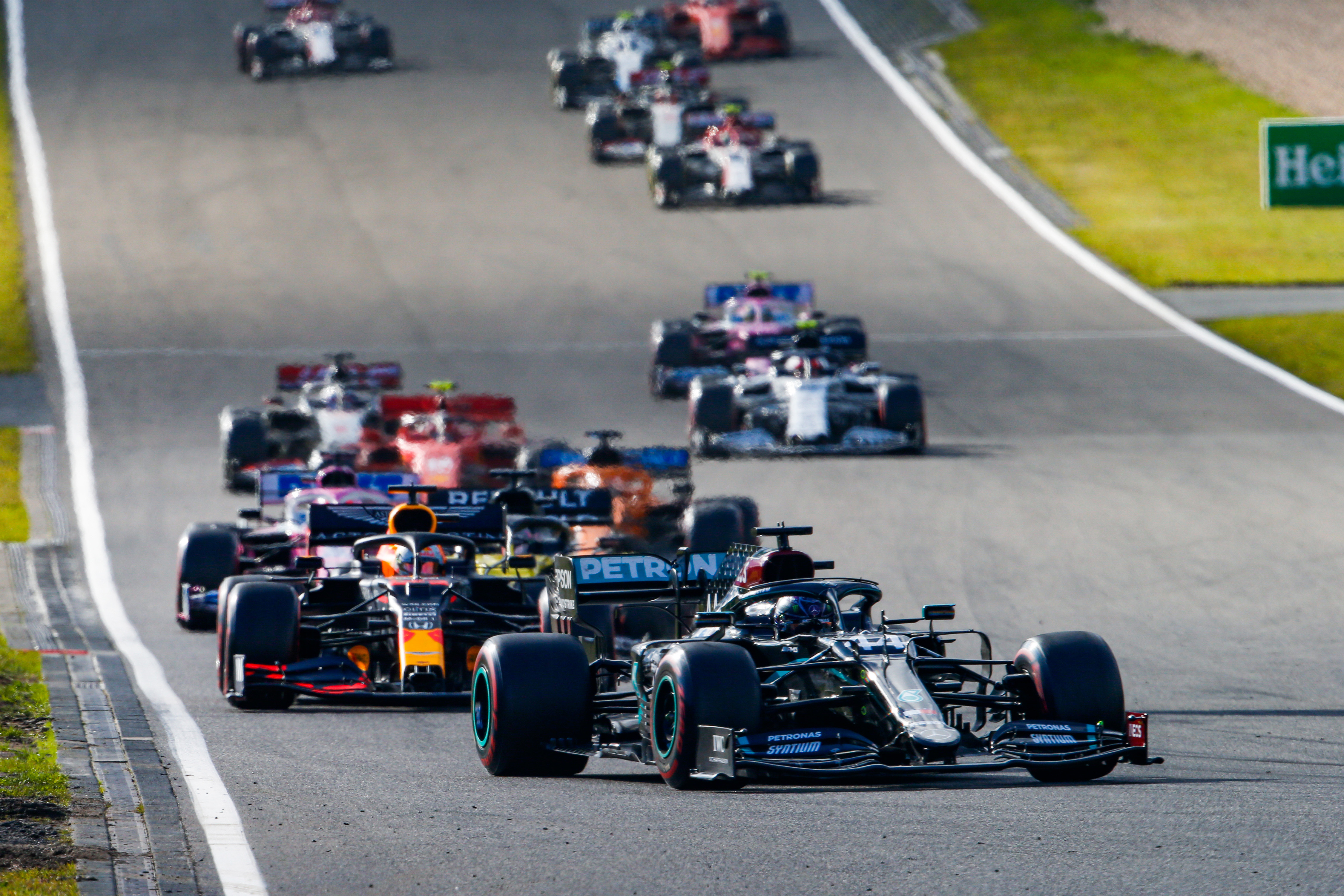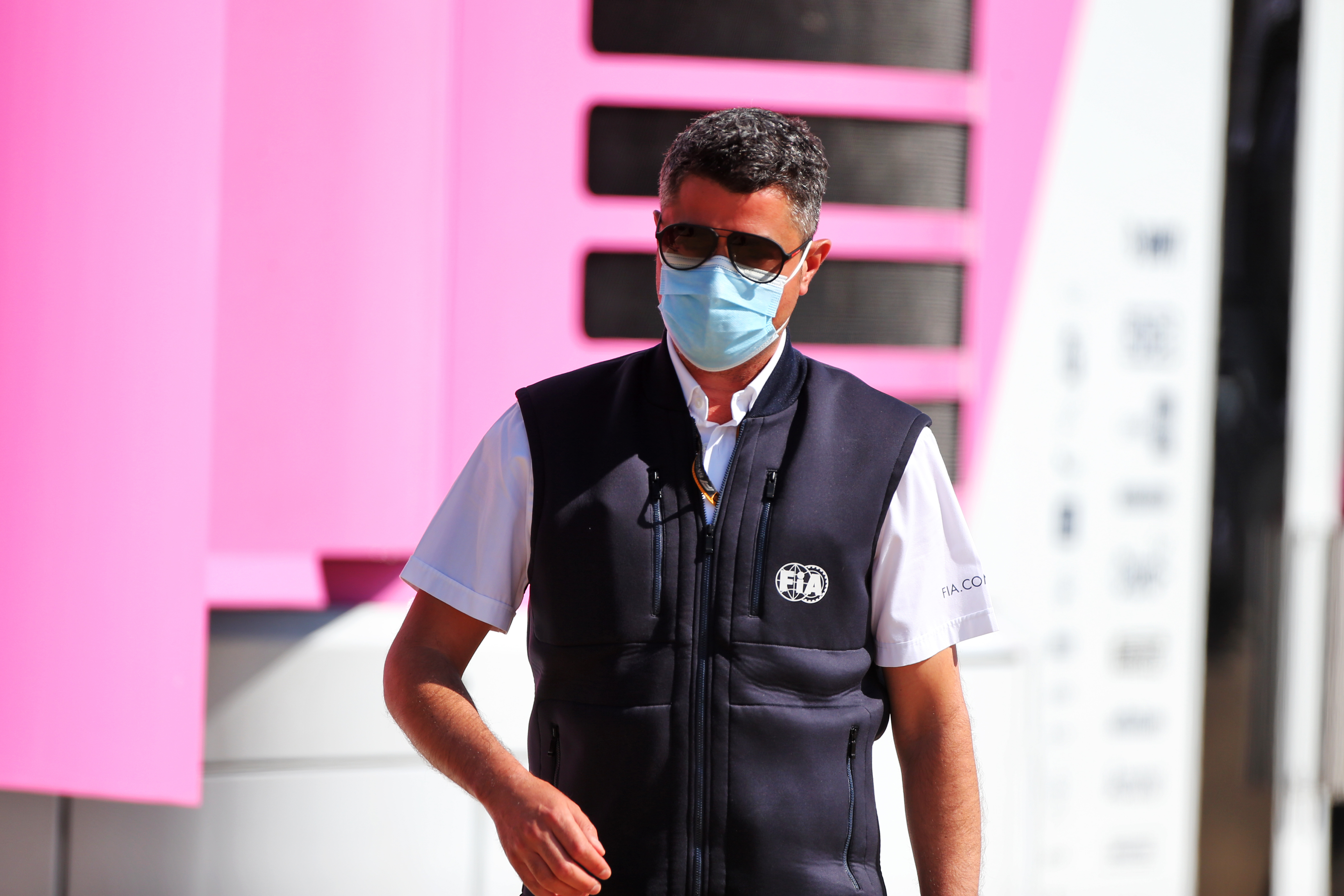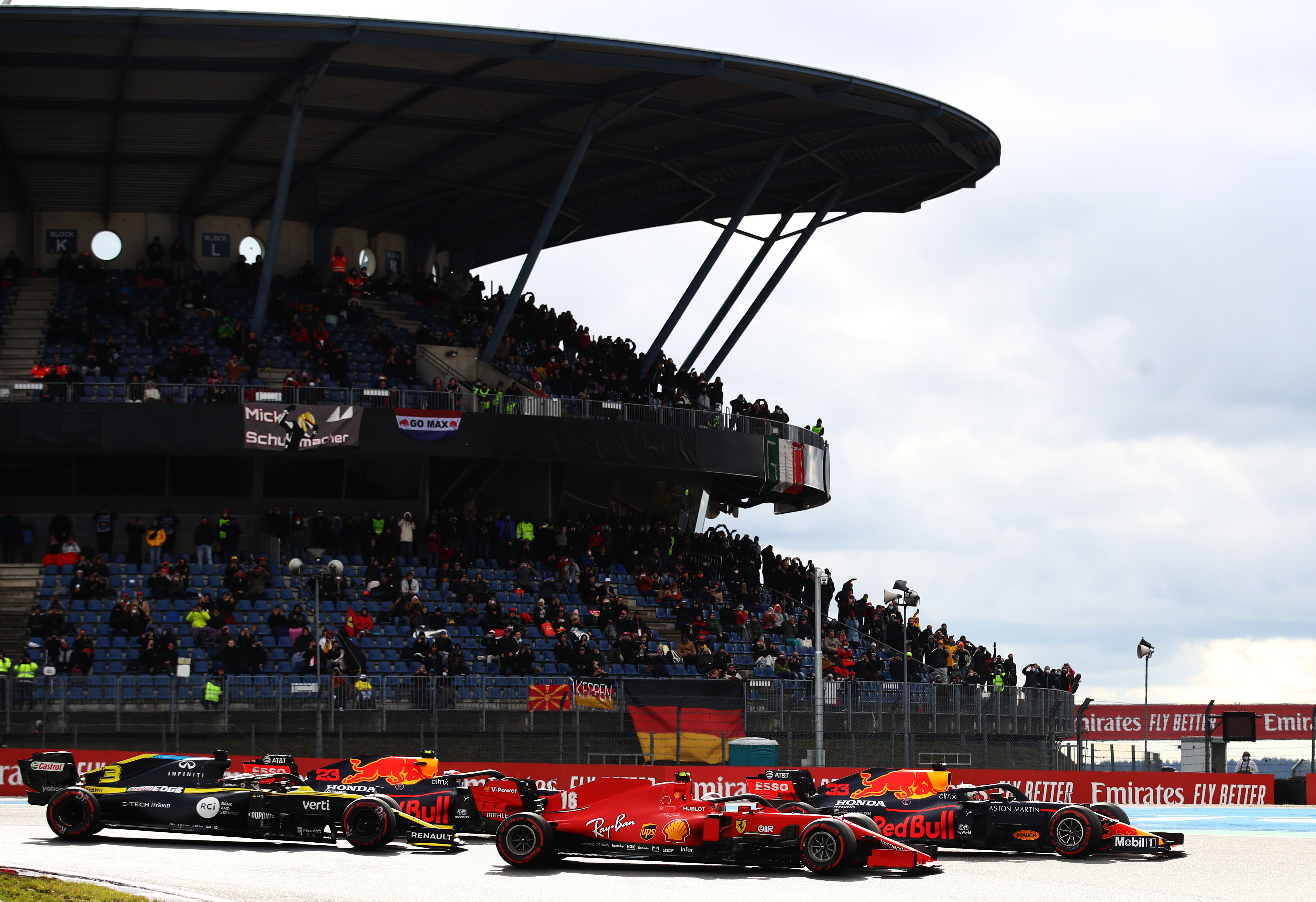Up Next

FIA race director Michael Masi says the lengthy safety car period that enraged Lewis Hamilton and Max Verstappen in the Eifel Grand Prix was entirely justified.
The safety car was deployed when Lando Norris parked his McLaren at Turn 6 at the Nurburgring, right next to an opening in the barrier, because of an engine failure.
When his car came to a halt it had scorched bodywork and smoke coming through, and the MCL35 ended up being craned away over the barrier by a recovery vehicle that remained behind it.
Race leader Hamilton and second-place man Verstappen were highly critical of the safety car period as they felt they were being forced to go dangerously slow on a cold track and were losing tyre temperature.
Mercedes driver Hamilton messaged his team twice to complain about the speed of the safety car including saying: “It’s unsafe for him to go this slow for us guys with these tyres.”
Verstappen told Red Bull: “The safety car can’t be out for long mate because the tyres are getting so cold.
“He needs to drive faster, this is ridiculous.”

It took two laps for the sparsely populated field to get in line and both lead drivers were irritated further when the call came for the 10 lapped cars in the line – two-thirds of the field left running – to overtake the safety car.
“This was a bad call man,” said Hamilton.
Once the lapped cars had passed the safety car, Verstappen said: “The safety car can’t stay out another lap. The tyres are way too cold.”
But at the end of the lap the safety car was still on track, and Verstappen complained: “Keeping the safety car out for nothing, that’s unbelievable.
“But anything to make it more interesting, right?”
Masi justified the deployment of the safety car on the grounds that there was “smoke and fire” from Norris’s car, although did not explain exactly why that specifically necessitates the full safety car and not a virtual one.
He added that a second factor was that “at first glance, we weren’t confident that the car could actually be recovered into the opening that was there”.
“So rather than having to react along the way, it was determined to go for a safety car,” said Masi.
“That way, it could be dealt with all at once immediately, so it was the safest action in that circumstance.”

Masi said the lengthy duration of the safety car period was because the sporting regulations require all lapped cars to be let past and as there were so many lapped cars “the safety car period was a bit longer than what we would have normally expected”.
The sporting regulations do state that if the clerk of the course considers it safe, any lapped cars are required to pass the cars on the lead lap and the safety car.
But that rule also states that “unless the clerk of the course considers the presence of the safety car is still necessary, once the last lapped car has passed the leader the safety car will return to the pits at the end of the following lap”.
Verstappen’s initial “anything to make it more interesting” outburst was because the safety car was left out for almost two full laps after the lapped cars were let past.
And it appears the safety was left out one lap longer than required by the regulations because Daniil Kvyat, the last lapped car, did pass the safety car just before the finish line.
That means the safety car should have returned to the pits one lap earlier than it did – unless it was considered “necessary” to avoid the race restarting with leading five cars in one group and the rest still half a lap behind.
Verstappen’s ire did not calm after the race and he suggested it would be picked up with the officials at another time.

He said the safety car was unnecessary and the situation could have been handled with a virtual safety car “but I think they just wanted to make it more exciting again because of the gaps”.
“At a track here where it’s so cold, with the tyres we have, you need to bring them up to temperature,” Verstappen said.
“It was quite dangerous out there and the problem as well is that three or four cars are all the time behind the safety car.
“The others [from sixth-placed Charles Leclerc back], they get the wave around and they can warm up their tyres because they’re pushing so it’s also an unfair advantage for the guys behind us.
“We’ll talk about it and see what happens.”
It is not the first time that leading drivers have been unhappy about how safety car periods have been handled.
Both Mercedes drivers and others felt the safety car period at the Tuscan Grand Prix was handled in a way to make the restart more unpredictable by switching the safety car lights off later than normal to keep the field bunched together for as long as possible.
That was rejected by Masi after the race at Mugello but two weeks later it was raised in the Russian Grand Prix drivers’ briefing and appeared to be acknowledged as a factor and something to be avoided in the future.
The actual resolution is unclear though as drivers were told not to discuss the matter in detail and Masi has not commented directly on the role of the safety car lights since dismissing it as a factor at Mugello.







